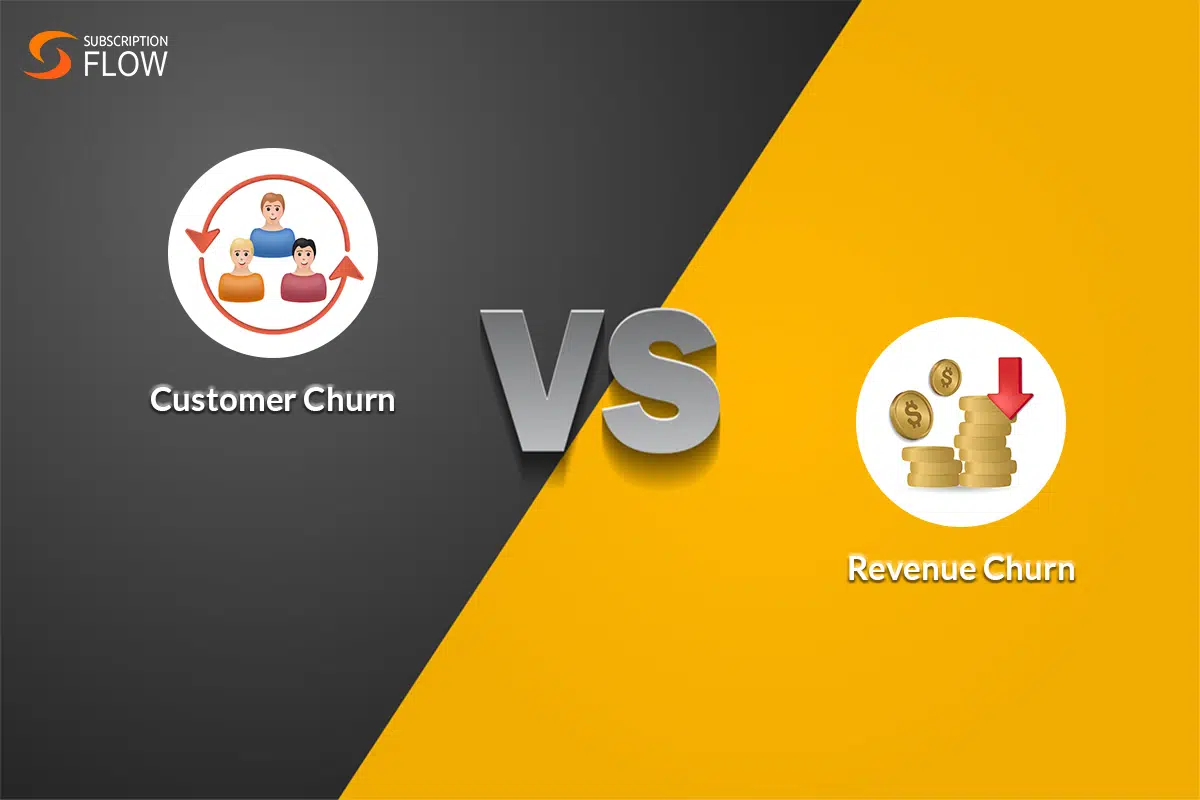
Customer Churn Vs. Revenue Churn
The high cost of customer churn is a significant concern for businesses. It’s been estimated that the average company loses around 20% of its customers yearly. And while some degree of customer attrition is to be expected, anything above this rate can severely impact revenue and growth.
What Is Customer Churn?
Customer churn, also known as customer attrition, is the process by which customers stop doing business with a company. While some degree of customer churn is inevitable, keeping it to a minimum is essential. High customer churn rates can significantly impact revenue and growth and can even put a company out of business.
Types Of Customer Churn
There are two main types of customer churn: reactive and proactive. Reactive churn occurs when customers leave in response to something that has happened, such as poor service or an unexpected price increase. Proactive churn occurs when customers leave before anything has happened, such as switching to a competitor before their current contract is up.
How To Measure Customer Churn
There are several ways to measure customer churn, but the most common is the churn rate. It is simply the percentage of customers who leave within a given period. For example, if 100 customers leave in a month and you have 1000 total customers, your churn rate would be 100/1000, or ten percent.
Why Is Customer Churn So Important?
Customer churn is essential because it’s one of the main drivers of revenue loss. When customers stop doing business with a company, that company loses out on the revenue it would have generated. In addition, it costs money to acquire new customers, so every lost customer represents not only a loss of revenue but also a loss of potential profit.
What Causes Customer Churn?
Several different factors can cause customer churn. Some common causes include:
– Poor customer service is one of the most common reasons customers leave. If they’re not happy with the service they’re receiving, they’ll take their business elsewhere.
– High prices: Customers are always looking for the best value, so if your prices are too high, they may switch to a competitor.
– Better options: As new companies enter the market and offer better products or services, customers will switch to them. It is especially true in fast-moving industries like technology.
What Can Businesses Do To Reduce Customer Churn?
There are a few different things businesses can do to reduce customer churn. Some common strategies include:
– Improving customer service: This is perhaps the most important thing businesses can do to reduce churn. By providing excellent customer service, you can keep customers happy and reduce their chances of leaving.
– Offering discounts and promotions: Customers are always looking for a good deal, so offering them discounts or promotions can keep them from switching to a competitor.
– Being proactive: Churn often happens because customers are surprised by something, such as an unexpected price increase. By being proactive and communicating with customers, you can avoid these surprises and keep them from leaving.
What Is Revenue Churn?
Revenue churn is the percentage of monthly revenue lost due to customers unsubscribing or downgrading their service. It’s a metric that is closely watched by subscription-based businesses, as it can have a significant impact on their bottom line.
How To Calculate Revenue Churn?
There are a few different ways to calculate revenue churn, but the most common method is to take the monthly recurring revenue (MRR) lost from canceled subscriptions and divide it by the total MRR for that month. For example, if a business has an MRR of $100,000 and loses $500 in MRR from cancellations, its monthly revenue churn would be 0.50%.
While customer churn is often used as a proxy for revenue churn, it’s important to remember that they are not the same. Customer churn measures the percentage of customers lost each month, while revenue churn measures the percentage of revenue lost. A business can have a high customer churn rate and still experience growth if its new customers are spending more than its canceled customers.
Why Is Revenue Churn So Important?
Revenue churn is a useful metric for subscription-based businesses, as it can give them insights into whether their customers are happy with their service or risk losing future revenue. A business with a high revenue churn rate could indicate that its customers are unhappy with its service.
A high revenue churn rate can also indicate future problems, as the business is losing a significant amount of revenue each month. It can put them at risk of not being able to meet their financial obligations, such as payroll or rent. It can also impact their ability to invest in new products or services, leading to a decline in customer satisfaction and an even higher churn rate.
What Causes Revenue Churn?
Several different factors can contribute to revenue churn. Some of the most common include:
– Poor customer service: If customers are unhappy with their service, they are more likely to cancel their subscription.
– Problems with the product: If there are problems with the product, such as bugs or errors, customers may be less likely to use it and more likely to cancel their subscription.
– Changes in pricing: If a business changes its pricing, customers may decide it is no longer worth paying for and cancel its subscription.
– Competitors: If customers find a better deal from a competitor, they may switch to them instead.
What Can Businesses Do To Reduce Revenue Churn?
One of the most important things is ensuring customers are happy with their service. It means providing excellent customer service and addressing any issues they may have with the product. It’s also essential to be proactive in reaching out to customers to see how they are enjoying the service and if there is anything that can be done to improve their experience.
Another way to reduce revenue churn is by offering discounts or other incentives for customers who remain subscribed for a more extended period. It could be as simple as a monthly discount for customers who stay subscribed for six months or a year. It will help encourage customers to remain subscribed for longer and reduce the likelihood of canceling their subscriptions.
Finally, it’s essential to keep an eye on your competitors and ensure that you offer a competitive price. If a customer can get a similar service from another company for less money, they will likely switch. By being aware of your competitors’ actions, you can ensure that your pricing aligns with what customers are willing to pay.
Customer Churn Vs. Revenue Churn — Which Metrics Should Subscription Businesses Use?
When running a subscription business, two of the most important metrics to track are customer churn and revenue churn. But what’s the difference between the two, and which one should you focus on? Both customer churn and revenue churn are essential metrics to track, but they provide different insights into your business. Customer churn can be used to measure the health of your customer relationships, while revenue churn can be used to measure the financial health of your business.
So, which metric should you focus on, revenue churn vs. customer churn? The answer depends on your business goals. If your goal is to grow your customer base, then you should focus on customer churn. If your goal is to increase revenue, then you should focus on revenue churn. No matter which metric you choose to focus on, it is essential to track it over time and use it to decide how to grow your business.
How SubscriptionFlow Helps
SubscriptionFlow helps reduce both types of churn by providing insights into why customers are canceling or downgrading and giving you the tools to prevent it. For example, let’s say you have a customer who cancels their subscription. SubscriptionFlow will show you the customer’s journey, from the sign-up process to the cancellation. This way, you can see exactly where things went wrong and make changes to prevent it from happening again.
Similarly, if you have a customer who downgrades their subscription, SubscriptionFlow will also show you their journey. This way, you can identify which features they’re not using and offer them an incentive to upgrade again. In short, SubscriptionFlow helps reduce churn by providing insights and tools that help you keep your customers happy.
If you’re interested in learning more about how SubscriptionFlow can help reduce your churn rate, book a demo with us!










